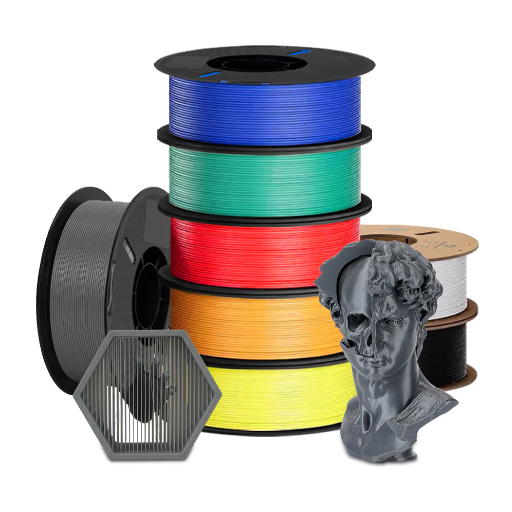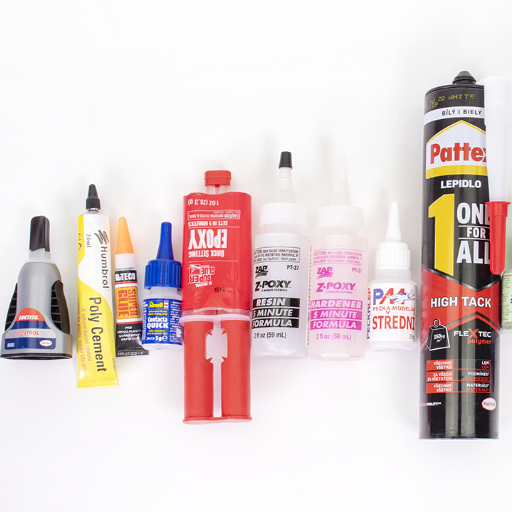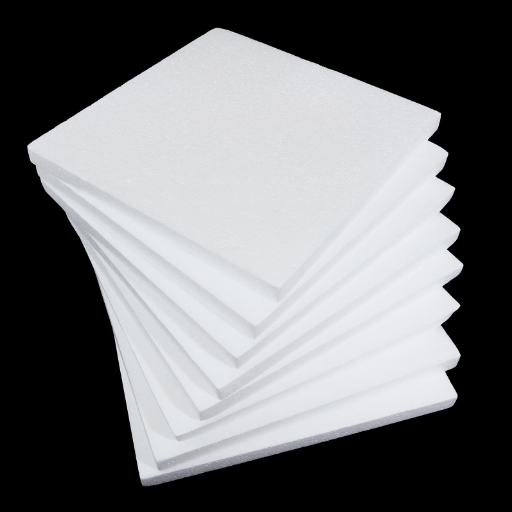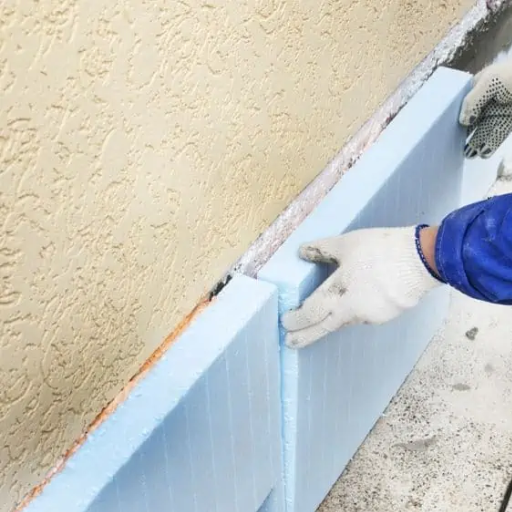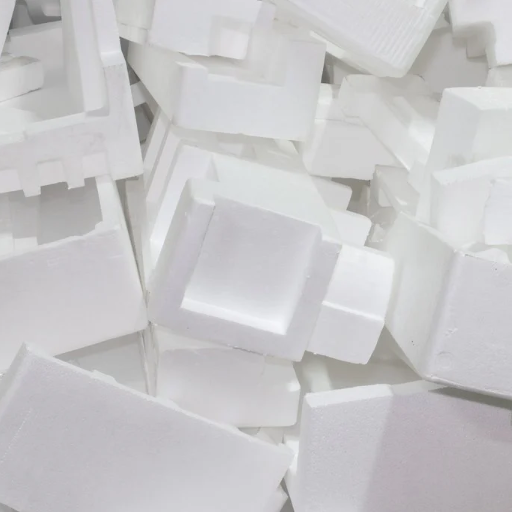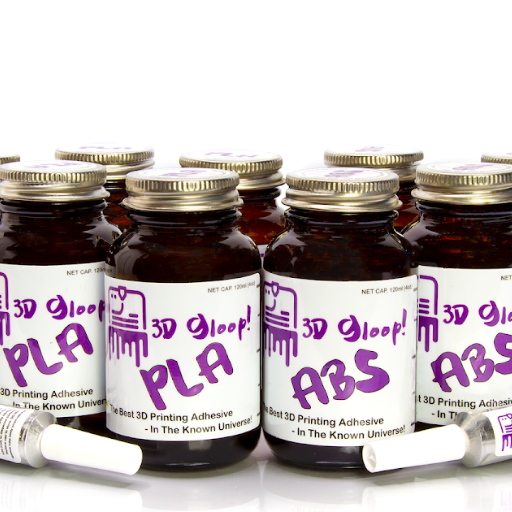For home repairs, crafting, or even quick emergency fixes, super glue is an essential household item. With various options available in the market, two trusted brands that stand out for their guaranteed strong bonds are Krazy Glue and Loctite. However, which one of these super glues is ideal for your requirements?
In this blog post, we will engage in a detailed comparison of Krazy Glue and Loctite reviewing their most notable features and pros and cons. Wielding both adhesives as test subjects, we will assess their performance against each other in terms of adhesion strength, versatility, ease of application, and durability.
What are the main differences between Krazy Glue and Loctite?

Krazy Glue and Loctite differ primarily in their formulation, application focus, and packaging options. Krazy Glue is known for its quick-drying formula, making it ideal for light, fast repairs on non-porous surfaces like ceramics, plastics, and wood. It often comes in simple, user-friendly packaging that emphasizes convenience. On the other hand, Loctite offers a more diverse product range, including specialized adhesives for heavy-duty applications and varying materials such as metal and rubber. Loctite typically boasts enhanced strength and durability, with some products tailored for industrial use. While Krazy Glue excels in speed and simplicity, Loctite provides versatility and reliability for more demanding tasks.
Comparing cyanoacrylate formulations
Cyanoacrylate adhesives, commonly referred to as super glues, are available in a variety of formulations designed to suit different applications. The primary differences lie in curing time, viscosity, and material compatibility. Standard formulas cure quickly upon contact with moisture, making them ideal for rapid repairs. Gel formulations offer increased viscosity, reducing drips and enabling better control on vertical surfaces or porous materials. For industrial applications, specialized formulations are developed to withstand extreme temperatures or chemical exposure, ensuring reliability in demanding conditions.
Additionally, the choice of cyanoacrylate depends heavily on the materials being bonded. While basic versions work on materials like plastic, wood, and ceramics, advanced variants are tailored for flexible substrates, metals, or even rubber. Some manufacturers add stabilizing agents to slow curing time, allowing for more precise alignment, particularly for intricate assemblies. Overall, selecting the right formulation requires assessing the specific project needs and environmental conditions for optimal performance.
Bonding strength and versatility
Bonding strength and versatility are critical when evaluating adhesives for various applications. High-strength adhesives can hold substantial loads and withstand environmental stresses such as temperature fluctuations, moisture, or vibrations. Epoxy adhesives, for instance, are known for their remarkable strength and durability, making them ideal for demanding industrial or structural uses. On the other hand, multipurpose adhesives provide flexibility, catering to a variety of surfaces, including metals, plastics, glass, and ceramics. The key to achieving both strength and versatility lies in understanding the adhesive’s chemical formulation and compatibility with the materials in question. By selecting an adhesive optimized for your specific usage scenario, you can ensure reliable, long-lasting performance.
Application methods and ease of use
When it comes to applying adhesives, the method largely depends on the type of adhesive and the materials being bonded. Common application techniques include using brushes, rollers, syringes, or spray systems for even distribution. Precision applicators are ideal for small, delicate surfaces, while industrial dispensers aid in high-volume applications. Preparing the surfaces beforehand by cleaning and ensuring dryness is essential to achieve maximum bond strength.
Ease of use varies across adhesive types. For instance, instant adhesives like cyanoacrylates offer quick curing times and are user-friendly for small repairs, while epoxy adhesives may require mixing and longer setting periods, demanding more careful handling. Some adhesives, such as pressure-sensitive or heat-activated variants, provide convenience in application but may require specific equipment or conditions.
Which adhesive works best for different materials?

Choosing the right adhesive depends on the materials being bonded. For wood, PVA glue is highly effective due to its strong bond and ease of use. Metal often requires epoxy adhesives or cyanoacrylate for their strength and durability. Plastic materials typically work well with solvent-based adhesives or specialized plastic glues, especially for hard-to-bond surfaces like polypropylene. For glass, silicone adhesives are ideal as they provide flexibility and transparency. Fabric or leather bonds best with contact adhesives or fabric-specific glues that maintain flexibility. Always consider the specific properties of the materials and the adhesive to ensure a secure and lasting bond.
Plastic bonding capabilities
Plastic bonding presents unique challenges due to the non-porous and smooth surface of most plastics. To ensure a strong bond, understanding the type of plastic is crucial. Thermoplastics like polyethylene and polypropylene are notoriously difficult to bond without surface treatment, typically requiring flame treatment, chemical etching, or the use of specialized primers. For general-purpose bonding, cyanoacrylate superglues are effective on rigid plastics, though they may lack flexibility. Epoxy adhesives are another versatile option, offering high strength and resistance to environmental factors, making them suitable for more demanding applications. For bonding polyethylene or polypropylene specifically, specially formulated plastic adhesives, such as those containing polyolefin primers, are recommended. It is essential to clean surfaces thoroughly and follow the adhesive manufacturer’s instructions to achieve optimal bonding results.
Performance on porous vs non-porous surfaces
Adhesives behave differently depending on the surface type, with key distinctions between porous and non-porous materials. On porous surfaces, such as wood, fabrics, or unglazed ceramics, adhesives tend to seep into the material’s structure, forming a strong mechanical bond. This makes them highly effective for applications involving textured or absorbent materials. However, the bonding process may require slightly more adhesive or longer curing times for optimal results.
On non-porous surfaces like glass, metal, or plastics, adhesives rely more heavily on surface tension and chemical bonds to achieve adhesion. Smooth, impermeable surfaces often benefit from adhesives specifically engineered for such materials, such as epoxy or cyanoacrylate glues. Proper surface preparation, such as cleaning and degreasing, is especially critical for ensuring a strong bond.
Effectiveness on metals, ceramics, and other materials
When bonding metals, adhesives like epoxy and acrylics perform exceptionally well due to their high shear strength and tolerance for temperature fluctuations. For effective adhesion, surfaces should be clean, free of oxidation, and sometimes roughened to improve grip. With ceramics, their brittle nature benefits from adhesives like cyanoacrylates and specialized ceramic epoxies, which create strong, durable bonds ideal for porous surfaces. Plastics, being diverse in composition, require adhesives suited to their type—polyurethane works well for flexible plastics, while acrylics or solvent-based adhesives are best for rigid plastics.
How do Krazy Glue and Loctite compare in dry time and bond strength?

Krazy Glue and Loctite both offer fast drying times, but Krazy Glue typically sets in 10 to 30 seconds, making it ideal for quick fixes. Loctite, depending on the product variant, may take slightly longer to set but often provides superior bond strength across a wider range of materials. While Krazy Glue excels in creating rigid bonds on smaller surfaces, Loctite is better suited for demanding applications requiring durability and resistance to environmental factors, such as moisture or vibrations.
Setting and curing times
When comparing setting and curing times, Krazy Glue sets almost instantly, often within 10-30 seconds, which makes it perfect for quick, small-scale repairs. Loctite, on the other hand, generally requires 5-10 minutes to set, depending on the product type, but its curing time results in a more durable bond, typically taking 24 hours to fully cure. While Krazy Glue works best for fast applications without heavy stress, Loctite’s longer curing process allows for superior strength and reliability, especially for materials exposed to moisture, temperature changes, or vibrations. Ultimately, the choice hinges on whether speed or long-term durability is more critical for your project.
Long-term durability of bonds
When assessing the long-term durability of adhesive bonds, key factors include the materials being bonded, environmental exposure, and the type of adhesive used. Epoxy adhesives are known for their exceptional strength and ability to withstand harsh conditions, making them ideal for long-term applications. They resist moisture, heat, and chemicals, ensuring structural integrity over time. Polyurethane adhesives offer durability with flexibility, excellent for materials prone to expansion or contraction. Conversely, cyanoacrylate adhesives are best for quick fixes, but they may degrade with extended exposure to moisture or stress. For lasting bonds, proper surface preparation and curing are critical, as they influence the adhesive’s performance in conditions such as temperature fluctuations, humidity, and mechanical stress.
Strength testing results
Epoxy adhesives consistently deliver the highest structural strength, particularly in high-stress conditions, and excel in bonding metals, plastics, and composites. Polyurethane adhesives demonstrate reliable strength with added flexibility, making them ideal for applications where materials experience movement or vibration. Cyanoacrylate adhesives provide rapid bonding with reasonable tensile strength but are less resilient under prolonged stress or exposure to environmental factors like moisture.
Testing also reveals that bond strength is critically dependent on proper application techniques. Key factors include ensuring clean, grease-free surfaces, using appropriate adhesive quantities, and allowing sufficient curing time, as incomplete curing weakens bonds. Across all adhesive types, both temperature and humidity during application and in the operating environment significantly impact long-term performance. Evaluating requirements such as desired durability and bonded material compatibility is essential to selecting the most suitable adhesive for specific needs.
What are the unique features of Loctite Super Glue products?
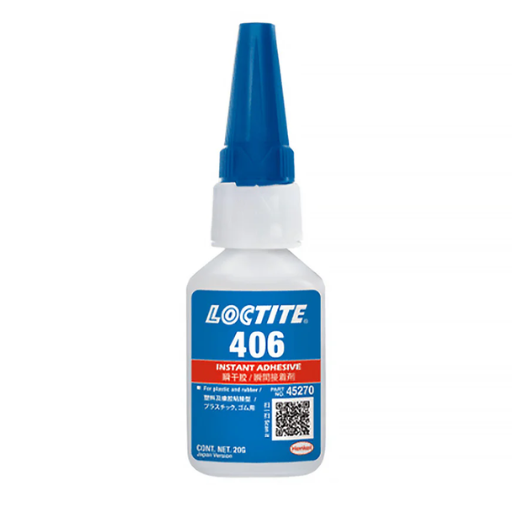
Loctite Super Glue products are renowned for their fast-acting formulas, bonding most materials in seconds with precision. They offer exceptional strength and durability, creating long-lasting bonds even under challenging conditions. Their easy-to-use design includes anti-clog caps for extended product life and mess-free application. Additionally, Loctite Super Glues are resistant to moisture, temperature fluctuations, and most chemicals, ensuring reliability across a wide range of applications. With specialized variants available, they accommodate different materials, from plastics to metals, making them highly versatile and dependable solutions for various adhesive needs.
Loctite’s gel formulations
Loctite’s gel formulations deliver precision and strength, making them a preferred choice for complex adhesive tasks. These gels feature a thick, non-drip consistency that ensures controlled application, even on vertical or overhead surfaces. They are ideal for bonding porous or uneven materials like wood, leather, or fabric, as the gel formulation fills small gaps effectively. Resistant to shock, vibration, and temperature changes, Loctite gel adhesives are engineered to maintain robust connections in demanding environments. Whether you need to fix items around the home or handle industrial repairs, these adhesives offer reliability, versatility, and clean usage for a wide variety of surfaces and materials.
Loctite Ultra Gel Control
Loctite Ultra Gel Control is a high-performance super glue designed for both everyday and professional use. Its rubber-infused formula provides exceptional impact resistance and flexibility, making it ideal for bonding materials subjected to stress, shock, or vibration. Perfect for porous or non-porous surfaces, it works effectively on materials such as wood, metal, ceramic, plastic, and more.
This adhesive stands out due to its precision applicator, allowing for controlled application without dripping or mess. Its gel consistency ensures strong bonds even on vertical surfaces, and it can fill small gaps, providing a durable and reliable hold. Loctite Ultra Gel Control is also resistant to extreme temperatures and water, ensuring the bond remains intact in challenging conditions.
Specialized Loctite adhesives for specific applications
Loctite offers a diverse range of adhesives tailored to meet specific application needs, ensuring optimal performance in every scenario. For metal bonding, Loctite Metal Epoxy is a go-to option, providing a strong and permanent bond that withstands heavy loads and high pressures. When it comes to plastics, Loctite Plastic Bonder leads the way with its exceptional adhesion even on difficult-to-bond surfaces, delivering impact resistance and durability. For wood and porous surfaces, Loctite Wood Glue excels with its fast-drying and water-resistant formula, making it ideal for both indoor and outdoor projects. These specialized adhesives showcase Loctite’s commitment to providing precise solutions that meet the unique demands of professionals and DIY enthusiasts alike.
How does Krazy Glue stand out in the super glue market?

Krazy Glue stands out in the super glue market due to its exceptional bonding strength and quick-drying formula, making it ideal for repairing a wide range of materials, including ceramics, plastic, wood, and metal. Its precision applicator allows for accurate placement, reducing mess and ensuring professional results. Additionally, its versatility and long-lasting hold have made it a trusted choice for both household fixes and creative projects, setting it apart as a reliable and convenient adhesive solution.
Krazy Glue’s all-purpose formulation
Krazy Glue’s all-purpose formulation is engineered to deliver fast, durable, and precise adhesive solutions for virtually any material. Its advanced cyanoacrylate formula is designed for high-performance bonding, delivering a secure hold in seconds. This quick-drying adhesive works seamlessly on surfaces like ceramic, wood, plastic, metal, and even rubber, making it a versatile tool for a variety of repairs and projects. Thanks to its resistance to impact, heat, and water, Krazy Glue is ideal for both indoor and outdoor use. Its user-friendly design, featuring an easy-to-use precision tip, ensures controlled application with minimal mess. This makes Krazy Glue a top choice for DIY enthusiasts and professionals alike who demand reliability and efficiency in their adhesive products.
Precision tip applicator advantages
The precision tip applicator offers several key benefits that enhance usability and efficiency. Its design allows for accurate application, ensuring adhesive is dispensed exactly where it is needed, which minimizes waste and prevents mess. This level of control is particularly valuable for detailed projects or small repairs, such as fixing delicate jewelry, intricate crafts, or narrow cracks. Additionally, the precision tip helps avoid overapplication, reducing the risk of excess glue spreading onto unwanted areas. It supports a clean and professional finish, making it an excellent tool for tasks that demand accuracy and finesse.
Krazy Glue’s quick-bonding properties
Krazy Glue is renowned for its fast-acting formula, capable of creating a strong bond in mere seconds. This efficiency is achieved through its cyanoacrylate adhesive, which reacts quickly with trace moisture on surfaces to solidify and form a durable connection. Its quick-bonding properties make it ideal for a variety of materials, including ceramics, metal, wood, plastic, and rubber. Users appreciate its ability to minimize wait times, allowing projects or repairs to be completed swiftly. Whether it’s a broken household item, a craft project, or an emergency fix, Krazy Glue delivers reliable results with remarkable speed.
Which brand offers better value for DIY projects and repairs?

When evaluating value for DIY projects and repairs, Krazy Glue stands out as a top contender due to its universal application, affordability, and proven reliability. Its ability to bond a variety of materials quickly and securely makes it a versatile choice for both small fixes and more extensive tasks. Compared to other brands, Krazy Glue often provides a cost-effective solution without compromising quality, ensuring users get the most out of their investment.
Cost comparison of Krazy Glue vs Loctite
When comparing the cost of Krazy Glue and Loctite, both stand out as competitive and effective adhesives, but their pricing highlights subtle differences. Krazy Glue is typically more affordable, with single-use tubes and multi-packs offering budget-friendly options for everyday fixes. Loctite, on the other hand, may have a slightly higher price point, particularly for specialized formulas tailored to specific materials or industrial applications. However, Loctite’s advanced features, such as enhanced durability and precision applicators, might justify the cost for those needing long-lasting, specialized solutions. Overall, Krazy Glue offers better value for quick, general adhesive needs, while Loctite is ideal for more advanced or material-specific repairs.
Quantity and packaging options
Both Krazy Glue and Loctite offers customers a wide range of quantity and packaging options tailored to meet their unique preferences. For instance, Krazy Glue is usually found in single-use tubes, small multi-packs, or brush-on applicators suited for quick fixes. On the other hand, Loctite offers a more extensive range of packaging including precision tip bottles, gel tubes, and even industrial-sized containers. Loctite’s wide range of packaging options meets not only domestic needs but also professional and industrial purposes. Moreover, both brands ensure that their products are securely sealed to retain freshness and usability for long periods of time.
Versatility for various household uses
When it comes to versatility, both Krazy Glue and Loctite excel in addressing a wide range of household needs. Krazy Glue is ideal for quick fixes such as repairing broken ceramic, wood, and plastic items, offering a strong bond that’s reliable for everyday incidents. Its fast-drying nature makes it a go-to solution for minor, non-porous household repairs. On the other hand, Loctite shines with its advanced formulas suited for both porous and non-porous surfaces, enabling fixes on fabric, leather, and even heavier-duty materials like metal. The gel and precision applicator options offered by Loctite provide enhanced control for intricate repairs, such as fixing delicate jewelry or sealing small gaps. Both brands are invaluable tools for home improvement and maintenance, allowing users to efficiently handle a variety of common household challenges.
References
Frequently Asked Questions (FAQ)
Q: What are the main differences between Krazy Glue and Loctite super glues?
A: The primary differences between Krazy Glue and Loctite super glues lie in their formulations and applications. Krazy Glue is an all-purpose glue that is known for its quick bonding and ease of use, making it suitable for everyday repairs. Loctite superglue, on the other hand, offers a range of products including gel formulas for precise application and is often chosen for its strength and versatility in more specialized repair jobs.
Q: Which is the best super glue for precise applications?
A: For precise applications, using super glue in a gel formula is recommended. Loctite offers a super glue gel that allows for controlled application with minimal mess, making it ideal for tasks that require accuracy.
Q: Can Krazy Glue be used for all-purpose repairs?
A: Yes, Krazy Glue is an all-purpose glue that is effective for a variety of materials and everyday repairs. Its strong and fast bonding properties make it suitable for a wide range of household tasks.
Q: How does the drying time compare between Loctite and Krazy Glue?
A: Both Loctite and Krazy Glue are known for their quick drying times. Krazy Glue typically dries within seconds, while Loctite superglue also offers fast setting times with some formulations curing even faster for specific materials.
Q: Is there a difference in bonding strength between Loctite and Krazy Glue?
A: Both Loctite and Krazy Glue provide strong bonds, but Loctite often offers stronger bonding for more challenging materials and industrial applications, while Krazy Glue is sufficient for most household tasks.
Q: How should I apply the glue for the best results?
A: To apply the glue effectively, ensure that the surfaces are clean and dry. Use a small amount of glue and press the surfaces together firmly. For gel super glue, use the nozzle for precise application.
Q: What should I consider when choosing between gel super glue and liquid super glue?
A: Choosing between gel super glue and liquid super glue depends on the specific task. Gel super glue is ideal for vertical surfaces or porous materials, as it will not run or drip. Liquid super glue is better for smooth, non-porous surfaces where a thin layer is needed.
Q: How do I keep the glue from drying out?
A: To keep the glue from drying out, ensure that the cap is tightly sealed after each use. Store the glue in a cool, dry place and avoid exposure to air and moisture, which can cause it to harden prematurely.
Q: Can Gorilla Glue be compared to Loctite and Krazy Glue?
A: Gorilla Glue, while similar in use to Loctite and Krazy Glue, is known for its versatility and strength across a wide range of materials. It expands as it cures, providing a strong bond, but may not be as quick-setting as Loctite or Krazy Glue.
















